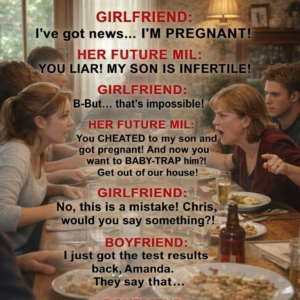In a mere matter of weeks following Millie Smith and Lewis Cann’s revelation that they were expecting twin baby girls, a heart-wrenching truth unveiled itself: only one would endure the journey ahead.
On the 30th of April, after enduring a precarious 30-week pregnancy, Smith delivered a pair of identical twins, Callie and Skye. Regrettably, Skye’s frail existence flickered away within a mere three hours.
In the neonatal intensive care unit (NICU), Callie slumbered solo in the incubator, while her adoring yet grieving parents maintained a vigilant watch. Amidst the cluster of infants, an overwhelmed mother of healthy newborn twins, unaware of Smith’s poignant circumstance, inadvertently remarked that she was “exceptionally fortunate” not to have twins.
Crushed by these thoughtless words, the new mother found herself lost for words, unable to articulate her profound grief. It was then, amidst her despair, that she discovered Skye’s enduring legacy, embodied in a delicate purple butterfly.
In November of 2015, Millie Smith and her partner, Lewis Cann, received the joyous news of their impending parenthood. Smith, with a familial history of twins, had an intuitive inkling of a duo in the making. Ten weeks later, medical confirmation arrived, affirming that they were expecting identical twin daughters.
However, the elation of doubling their familial blessings was short-lived. Less than a fortnight later, the couple’s world was shattered when they learned that one of their unborn daughters had a devastating and fatal condition, rendering her incapable of surviving beyond birth.
During a pivotal ultrasound, a deafening silence from the doctor overshadowed their initial excitement at seeing their two unborn babies. Intuitively, both Smith and Cann sensed the impending somber revelation. The doctors conveyed the grim news that one of the twins had anencephaly, a rare and severe birth defect, affecting only one in 4,600 babies across the United States. This condition left a baby devoid of critical portions of the brain and skull, and nearly all infants born with anencephaly succumbed shortly after birth.
Confronted with the agonizing certainty of one baby’s imminent demise and potential risks to the other, the couple resolved to proceed with the exceedingly high-risk pregnancy.

Over the ensuing months, the twins-to-be were christened Skye and Callie. “We believed that Skye deserved a name before her brief existence came to an end,” Smith remarked. “Anticipating her survival for mere seconds or minutes, I yearned for her to have a name during that fleeting moment.”
The symbolism behind “Skye,” she elucidated, was that it represented a place of perpetual presence, a celestial reminder of their cherished daughter.
Premature labor struck Smith on the 30th of April, compelling an emergency C-section. To help navigate this heart-wrenching loss, the couple was accompanied by a “bereavement midwife” during the childbirth. They were ushered into a specially designated room known as the “Daisy Room,” a haven where families could share precious moments with their newborns before and after their inevitable passing.
“When our girls were born, both of them cried. This was an immensely significant moment, as we were previously informed that Skye would remain silent and immobile,” recounted Smith. She expressed profound gratitude for the three precious hours they shared with Skye before her departure. “We held Skye close as she peacefully slipped away. It was the most excruciating moment of our lives. I have never experienced heartbreak of such magnitude. Yet, I take solace in her valiant struggle to spend those fleeting moments with us.”
While Callie, born prematurely, continued her stay in the NICU, sharing the unit with three other sets of twins, the passing of time seemed to dim Skye’s memory. After approximately four weeks, the silence surrounding Skye’s existence became palpable. Those around Smith, the other families in the unit, remained blissfully ignorant of her harrowing ordeal.
One fateful morning, an unwitting mother, whose twins also resided in the NICU, casually remarked to Smith that she was “fortunate” not to have twins.
“None of the other parents were privy to our situation, to Skye’s existence. The comment was innocently made in jest…they could not have known that I, too, had once been blessed with two,” Smith lamented. She continued, “But that remark nearly shattered me. I fled the room in tears, and they were left bewildered, unaware of the reason for my anguish. A simple emblem would have averted that distressing situation.”
In that poignant moment, Smith recognized the imperative to create a symbol that would serve as an eloquent advocate for parents grappling with the loss of a child, ensuring that such misunderstandings would never recur.
She conceived a poster for the NICU, conveying to both medical personnel and visitors that an incubator adorned with a purple butterfly signified the loss of one or more babies in a set of multiples.
“I chose butterflies as a tribute to those babies that took flight, and the color purple because it transcends gender distinctions,” explained Smith.
The concept of the purple butterfly, now under the auspices of the Skye High Foundation, has proliferated to hospitals spanning several nations across the globe.
Today, Callie is a vivacious and joyful seven-year-old, and Skye’s memory endures through purple butterfly mementos and other initiatives aimed at aiding families with babies like Skye worldwide. These purple butterflies have assumed diverse forms, from ornaments and cards to blankets and stuffed animals.
“While I may never eradicate such heart-wrenching experiences, the establishment of support networks and the implementation of simple symbols like stickers can alleviate the burden. It is an ordeal of unparalleled magnitude,” Smith reflected.
For any parent, the loss of a child, regardless of their age, is an insurmountable hardship. Millie Smith stands as a beacon of hope, dedicated to extending a helping hand to others in their darkest hours.
Kindly share this narrative so that others may comprehend the significance of a purple butterfly beside a newborn’s incubator!


